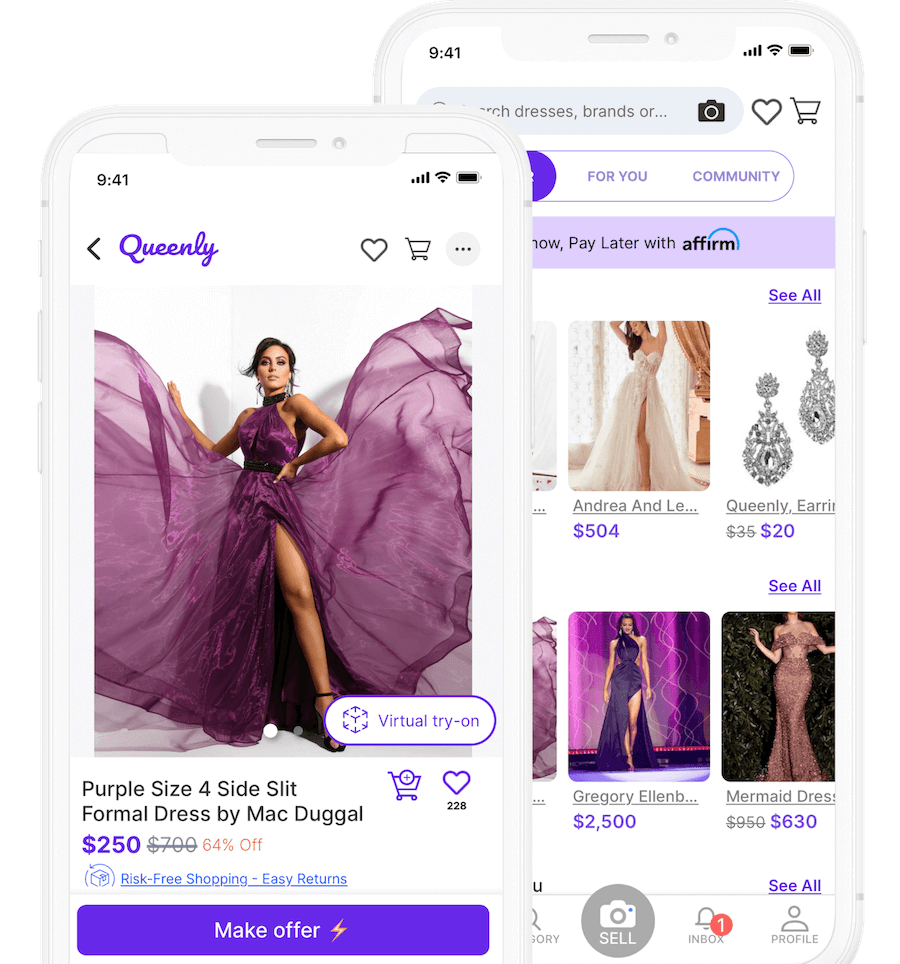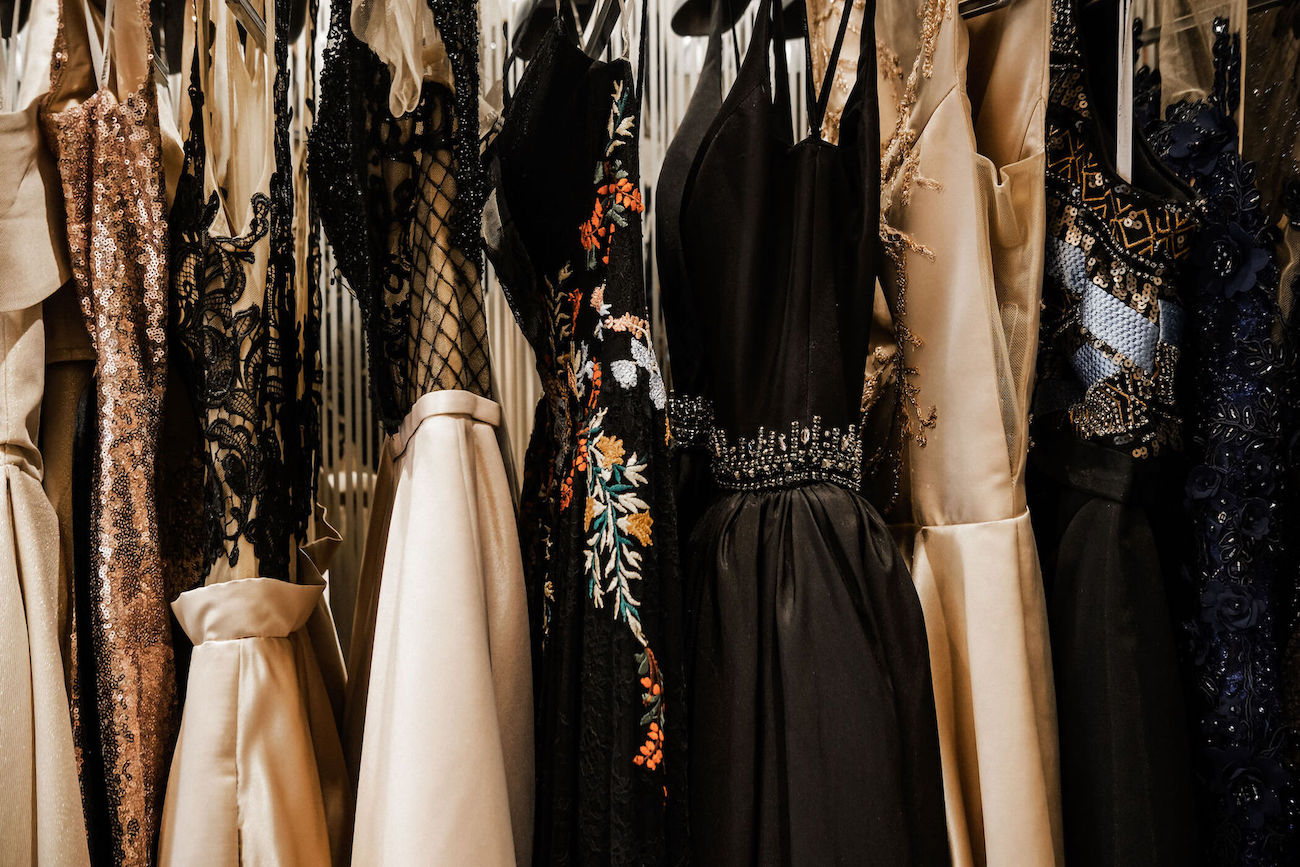
What Is Sustainable Fashion: Its Mission, Top Players, and Best Practices
Read more and get $30 OFF our dresses with a FREE Queenly account
Sustainable fashion has virtually become a hype term that many throw around on the internet. What it really is is a multifaceted strategy and practice aimed at combating one of the world's most environmentally harmful industries.
There is so much confusion around what sustainable fashion really is. Is it thrift shopping? Clothing rentals? Fairtrade certifications? The use of recycled materials? Secondhand online clothing shops?
Answer: All of the above. Along with new and emerging ethical brands, customer demand for sustainable brands, and even a dedicated ethical clothing search engine. The first step to learning about sustainable fashion and taking steps to change how you approach it? Educate yourself. Starting with an article just like this one. Congrats; you’re already on your way!
There are so many layers to approaching fashion in an environmentally friendly and sustainable way. Keep reading to discover what the term really means, steps to take, and inspiring brands to follow.
So, Why Is It Such a Problem?
The fashion industry is, unfortunately, on track with many other industries as one that is slowly destroying the very environment we live in. The fashion industry accounts for over 10% of the global carbon footprint.
There is an extreme use of environmentally degrading materials in the fast fashion industry. Fast fashion seems to be the crux of the problem, as some clothing websites churn out weekly drops of constant new trends, resulting in tons of waste and production costs.
Globally, there is one garbage truck full of textile waste dumped at a landfill or incinerated every second. So it is almost an understatement to say that this is a problem, and perhaps more apt to call it a fashion emergency, and not the kind a little black dress can fix.
What Is Sustainable Fashion?
Sustainable fashion practices are so widespread at this point that it is tough to narrow them down to a single definition. Ultimately, sustainable fashion means making the most conscious and intentional choices regarding your wardrobe.
It falls somewhere in between a combination of increasing awareness of the negative effects of the current fashion industry and taking an active role in making a change.
The most succinct definition for what sustainable fashion actually is is as follows. Sustainable fashion is an all-inclusive term describing products, processes, activities, and actors, meaning, policymakers, consumers, and brands, aiming to achieve a carbon-neutral fashion industry, built on equality, social justice, animal welfare, and ecological welfare.
Got all that? Don’t worry—it's a lot to take in. Let's break it down a bit more.
What is its Mission?
The mission of sustainable fashion is, essentially, to make the clothing industry one that doesn’t have such a negative effect on the environment.
Below, we’ve outlined some key tenants behind what the sustainable fashion movement is trying to accomplish. Namely, less waste, less pollution, and less consumption overall.
Ensuring Livable Working Conditions
Sustainable fashion is not only focused on the environment but also on the humans involved in this massive system. It ensures fair wages, proper working conditions, and no exploitation of people for production.
Cheap and fast fashion companies can produce garments at such a rapid rate by allowing harsh conditions for their workers. They often do so in developing countries where these workers are desperate for an income and thus willing to subject themselves to this type of work.
Even child labor accusations aren’t rare in these situations.
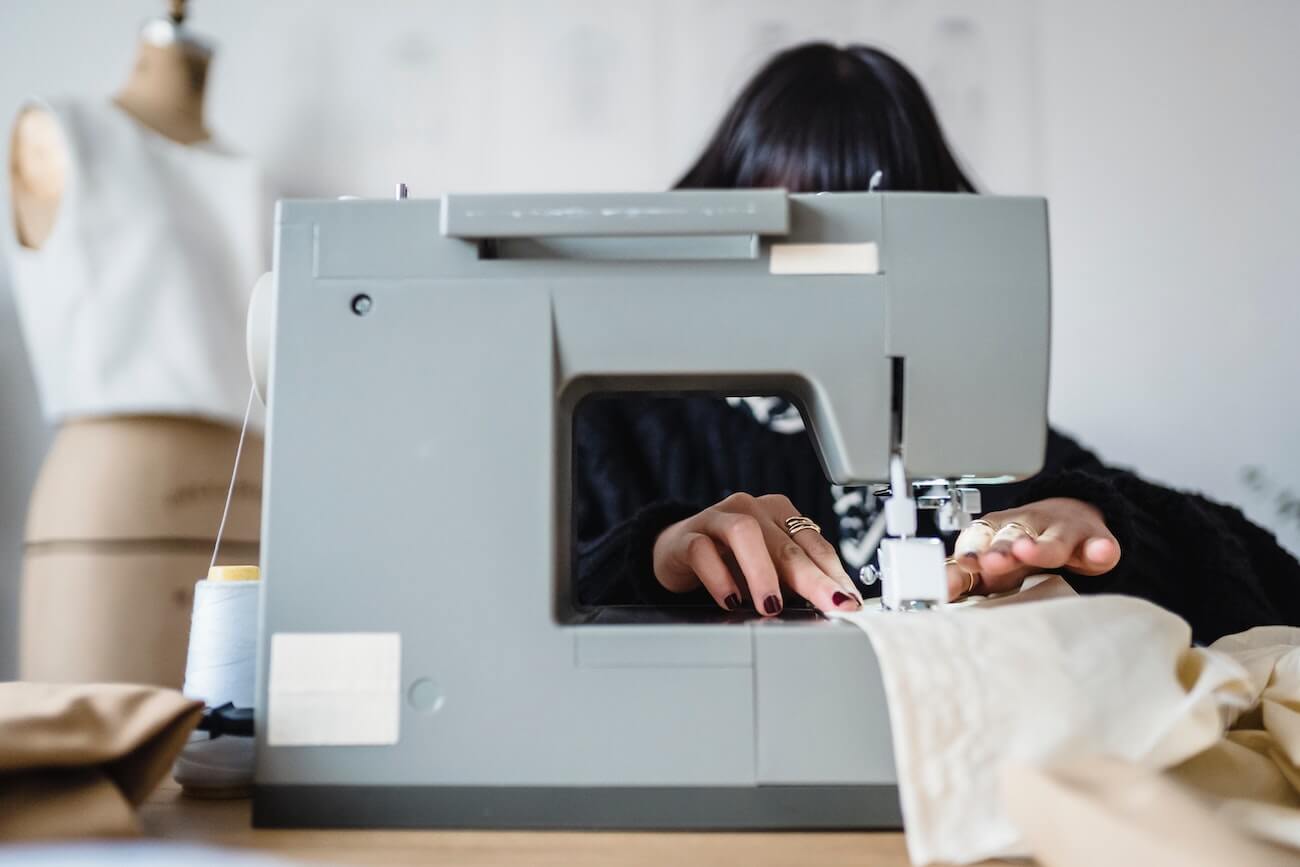
Sustainable clothing brands, on the other hand, prioritize fair wages and safe working conditions. Although this may seem like a no-brainer, unfortunately, it is not, and it is a perfect example of the immediate change that needs to happen in the world of fashion.
Creating Less Environmentally Harmful Waste
Fast fashion companies with a rapid turnover rate of trends often produce poor-quality products at a cheap price. Because these clothes are often made from petroleum-based materials, production and disposal require a lot of energy.
These materials include acrylic, nylon, polyester, and other materials that take ages to decompose, should they enter a landfill. 90% of clothing brands use plastics that cause large-scale environmental degradation.
Sustainable fashion also aims to reduce CO2 and other greenhouse gas emissions. This large carbon footprint that the fashion industry currently has often resulted from material creation, manufacturing, transportation, and even textile waste decomposition in landfills.
On the contrary, sustainable fashion uses biodegradable materials derived from natural or recycled fabrics. These require no chemical treatment, less energy, less water, and little to no pesticides or fertilizers to help grow. They focus on quality clothing made from long-lasting materials.
This means that sustainable fashion brands rarely follow fast fashion trends, and instead have a more classic and unique style.
Managing Resources in a Sustainable Way
Sustainable fashion aims to save water, energy, and countless other resources that the fast fashion industry is constantly disposing of or overusing.
Water is a key resource that is often wasted in the fashion industry, whether in the washing of garments, during the manufacturing process, or even the dyeing and finishing processes.
Currently, it takes on average 2720 liters of water to manufacture a cotton shirt, and an astounding 7000 liters to create a pair of jeans. On top of all of that, the water that is disposed of is often a pollutant to freshwater in the surrounding area through toxic chemicals that get into the waterways. This can affect both animals and humans alike in the surrounding areas.
Sustainable fashion brands, on the other hand, have “water on budget” policies that limit the usage of water. They also aim to prioritize organic textiles such as linen, hemp, and organic cotton. The production of all three of these requires very little water.
Saving the Lives of Animals
Currently, there are tons of animals sacrificed for the fashion industry to make leather bags, shoes, coats, fur, feathers, and wool. All of these exploitations of animals affect their populations and wellbeing.
70 million barrels of oil are used to make polyester fibers that often end up in our oceans, which can be detrimental to marine life.
Sustainable fashion, on the other hand, largely remains cruelty-free and vegan, protecting animals by using leather and fur alternatives. Sound more like it? We think so, too.
However, there are debates circulating about how some leather alternatives have the same plastic properties as other cheap fabrics and are more harmful to animals’ environments in the form of waste and pollutants. This is an active debate and there have been alternatives such as kelp leather that are starting to grow in effectiveness.
Important Terms and Best Practices To Know
There are plenty of buzzwords out there that get thrown around these days, and we’d like to clear some of them up. See below to find out what many of these words really mean and what their function means for sustainable fashion.
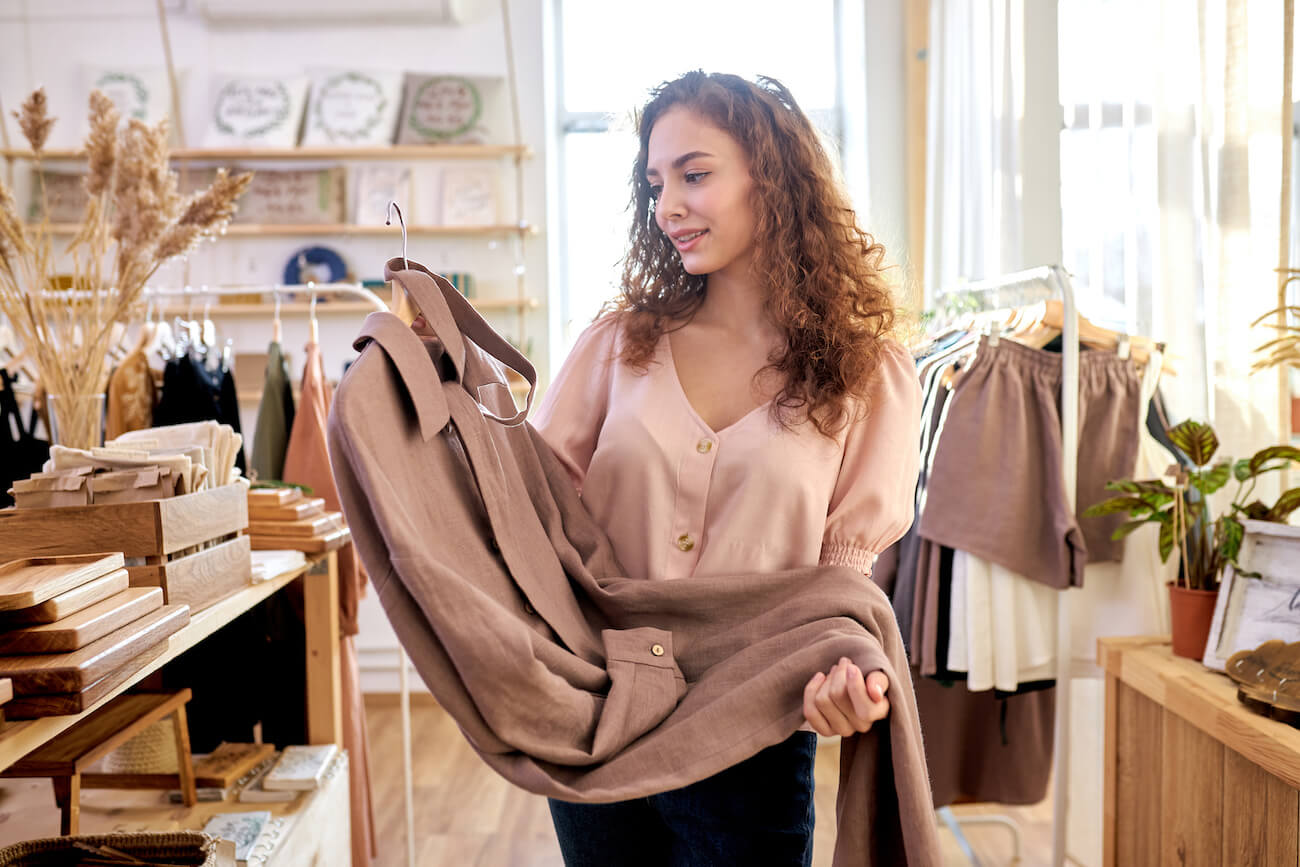
Secondhand Fashion
Because there is so much clothing out there that already exists, this is potentially the most noteworthy term on this list. There is no use of chemicals, and no further waste of resources because the items already exist.
Secondhand fashion can come in the form of thrift shopping, swapping clothes with friends, renting clothes from an online site, or just purchasing lightly used clothing rather than participating in further resources used in the creation of a brand new item.
One particular fashion item to blame is dresses. There are so many occasions where buying a dress feels necessary, weddings, prom, dances, etc, only for that dress to sit in the back of our closets, unused. Try looking at a sustainable online dress shop next time you have an important event to attend, you social butterfly.
Eco-Friendly Fashion
Also known as green fashion, this is a term that refers directly to the environmental impact of the fashion industry. So this means steering clear of waste creation, dangerous pollution, and reckless use of resources.
Green fashion companies, in contrast, use natural and sustainable fibers for their clothing.
Slow Fashion
Also known as artisanal fashion, it is the exact opposite of fast fashion. Slow fashion consists of timeless pieces made from quality materials that last a lifetime.
Upcycled Fashion
You’ve probably heard the term “upcycled.” What it means is the reusing and repurposing of old textiles to create a new piece. Have an old t-shirt you were going to throw out? Create a DIY tube top and use the excess fabric as a headband!
Upcycling has even become a new form of high-end luxury fashion, as each piece is one-of-a-kind and therefore extremely rare.
This form of sustainable fashion adds uniqueness, reduces waste, and reuses rather than trashes old materials destined for the landfill.
Greenwashing
Greenwashing happens when companies claim that they’re doing something good for the environment to the public to make their brand more popular. When, in reality, they are not.
Be careful of some environmental fashion certifications, as sometimes all it takes to gain them is a certain price to pay. Occasionally a company will produce a single shirt in a sustainable way and be awarded such a certificate. Not only is this unjust, but it is also extremely dangerous for the future of fast fashion.
Top Players in Sustainable Fashion
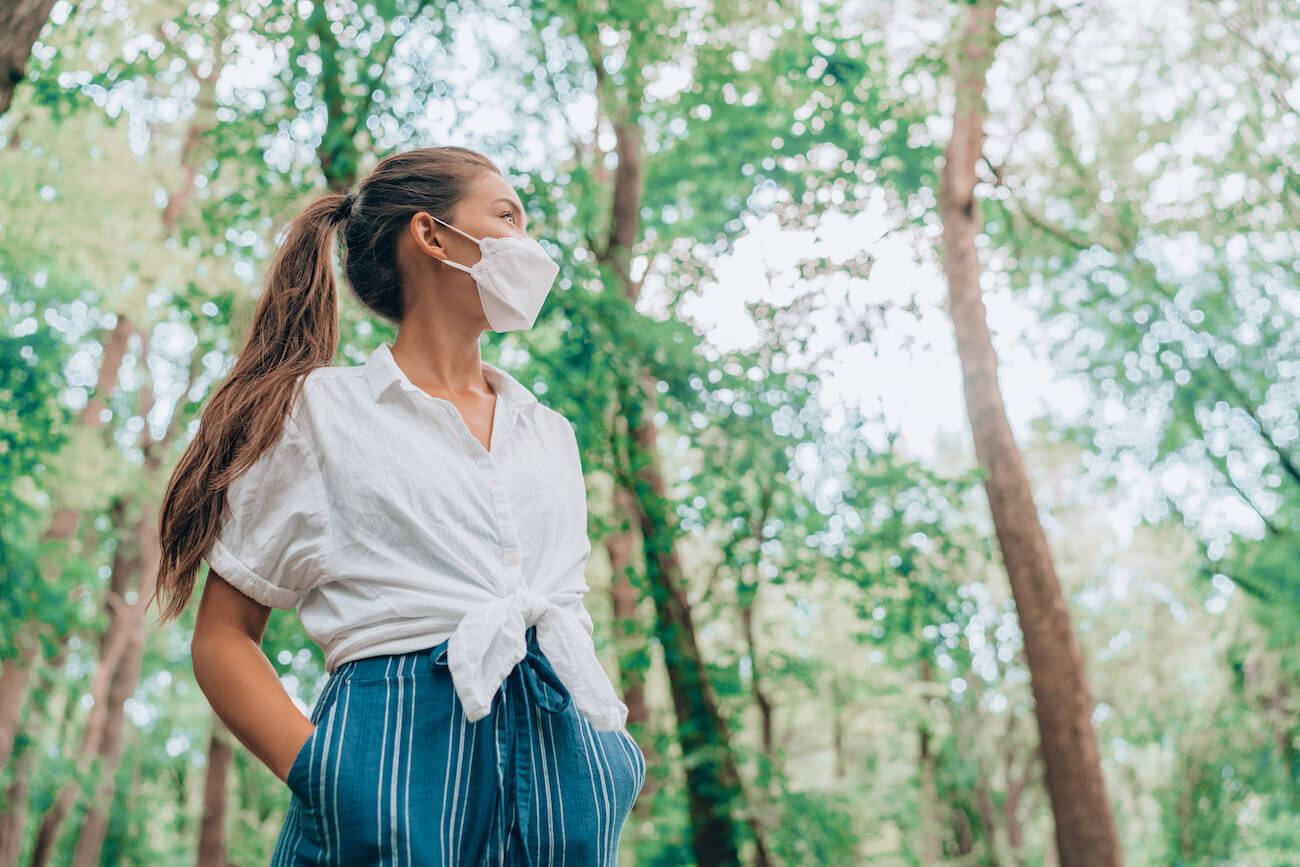
Now, don’t get too discouraged. Although there are a lot of people and companies out there doing it wrong, there are also plenty taking steps toward doing it right. Below are a few companies that are pioneering the industry of sustainable fashion and killing the game.
Patagonia
A pioneer in this industry for years, Patagonia outdoor recreation clothing and gear has really changed the game. They are fair trade certified, B Corp certified, they use organic cotton, upcycle, and help their customers repair and reuse their gear so that it lasts longer.
They even run a number of other environmental campaigns and awareness drives. If you’re a stranger to Patagonia, you’re missing out.
Eileen Fisher
Eileen Fisher always tops the charts for sustainable fashion. As a higher-end brand, Eileen Fisher is fair trade certified, practices sustainable manufacturing, and is inclusive.
Everlane
Everlane does the best job at combining sustainability and transparency. Their primary focus is creating environmentally sustainable garments, and partners closely with their factories and mills to ensure the use of the most sustainable fabrics and textiles.
Everlane provides an exact cost breakdown of each item in terms of resources and footprint. On top of all of that, their most recent line contains fabrics made from recycled plastic bottles. Yes, please.
Amour Vert
Amour Vert has appeared on many top-sustainable-brands lists, even including this one from Forbes. They are truly leading the way in sustainability, using sustainably sourced garments in small batches to avoid the waste of unsold items.
They are careful to use non-toxic dyes and sustainable fabrics. But the best part? For every item purchased, Amour Vert plants a tree, giving back to the very carbon emissions they try to avoid.
To Wrap It Up
Sustainability in fashion is not something to ignore going forward. It is already responsible for so much of our global carbon footprint today and is projected to account for around 30% of that global footprint by 2050 if we continue as we are.
So, what really makes a fashion brand sustainable? The brand must abide by as many possible terms to ensure both environmental and social sustainability.
All that to say, together, we can take on sustainable fashion and make conscious choices regarding our clothes. So get upcycling, educating, and raising awareness about the environmental impacts of fast fashion.


